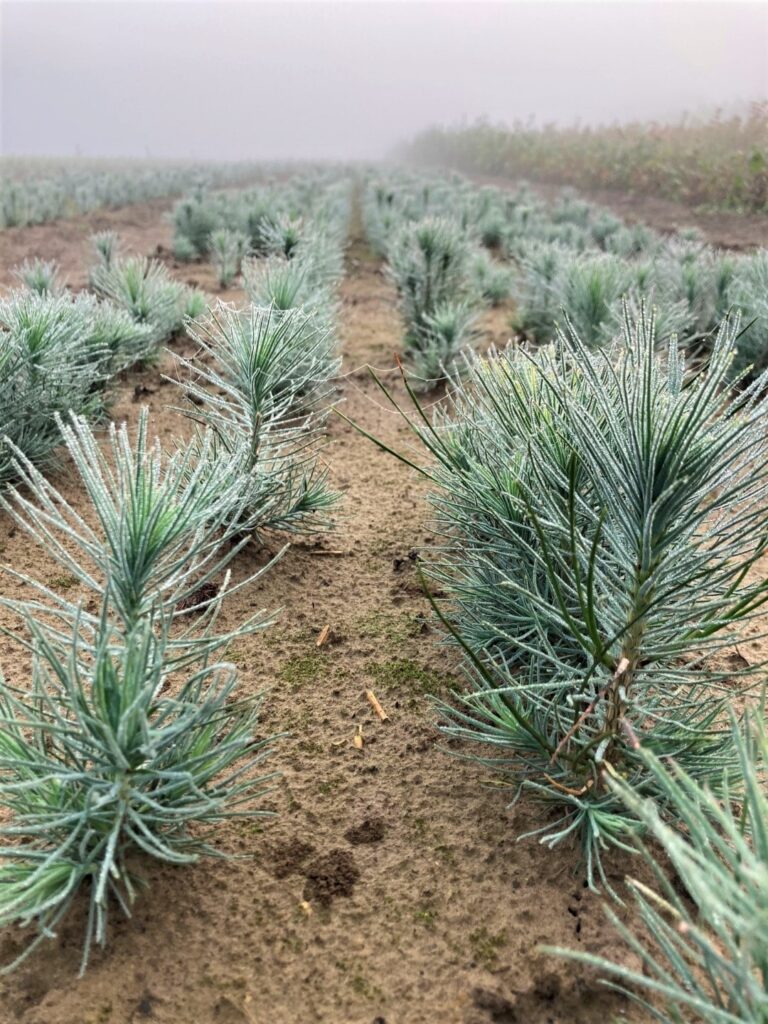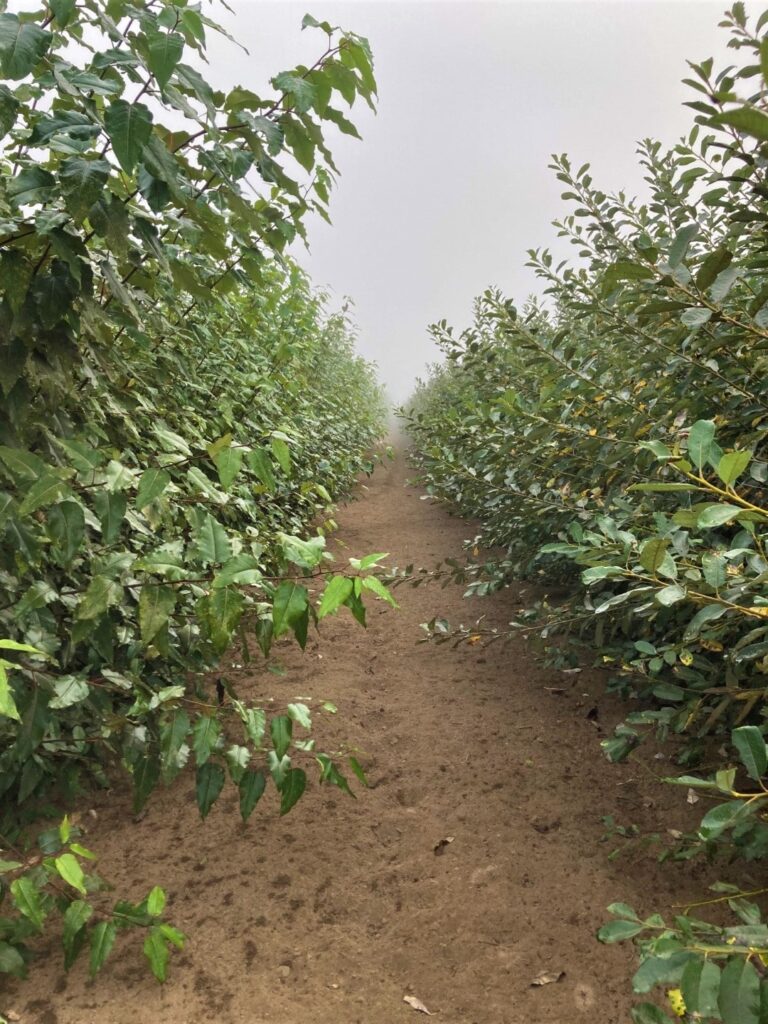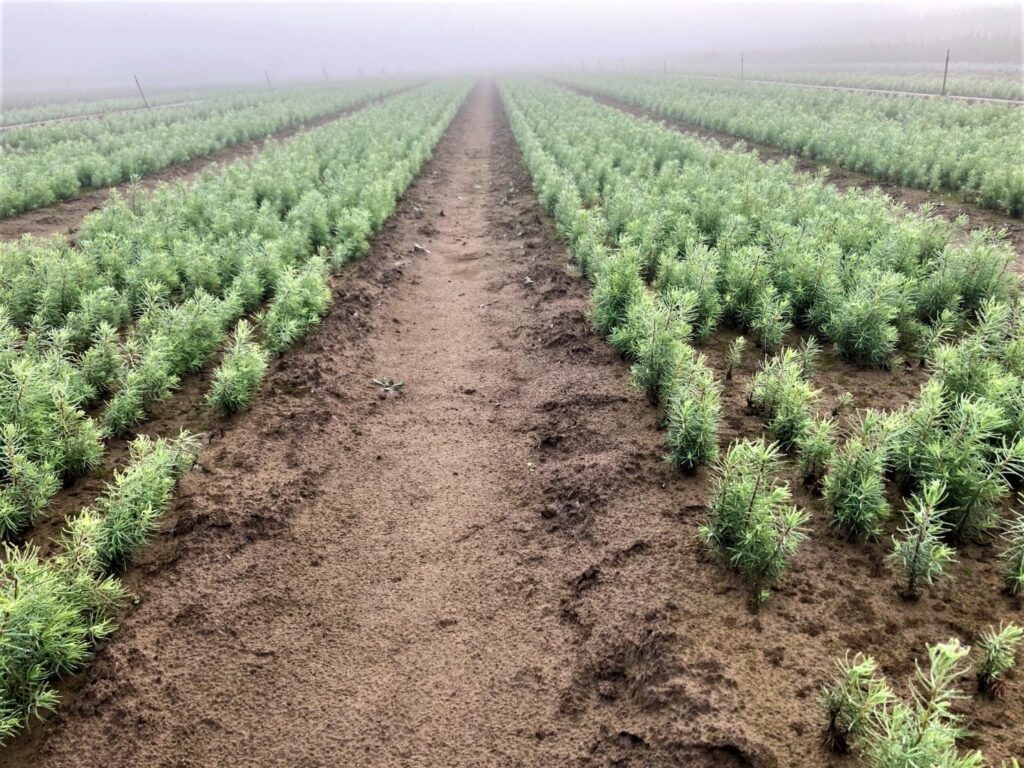Plant Materials Center Update: October 6, 2022
Here are 5 things that you should know about the PMC for October 6, 2022:
Sales
Sales remain strong. As of 10/6/22 the PMC has posted $1,270,239 in sales for the upcoming season. That compares with a similar date last year (10/13/21) when sales were $706,407. That represents a (hang on to your hats!) 79.8% increase from the same time last year. A small part of that increase can be attributed to a small price increase. The majority of it is due to a considerable increase in demand.
These increases are not unique to the PMC. Conservation and forest nurseries across the nation are experiencing the same phenomenon. Some drivers include increases in fire rehabilitation, increases in forestry, more riparian and upland conservation practices, and a trend towards planting more native plants relative to non-native ornamental plants.
This year’s sales so far are comprised of 209 orders, or an average of $6,107 per order. That is up from this time last year when the average order was $3,946. The staff have been working hard at keeping up and that is nothing compared to the efforts that will be required to fill all of these orders.
Dry Weather Continues
The fall has been unusually warm and dry so far. Not too many people are complaining about that, though! Anyone who has lived around here for any length of time knows that when the rains begin, they probably won’t stop for a long time.
The PMC has been able to practice drought-stressing plants to induce dormancy as never before and when plants become too dry, they can be irrigated. Usually, the PMC has started it’s fall seed planting schedule but so far, the ground is too dry to prep and plant. If the weather remains dry, the fall seedbed may need to be irrigated so that seed planting can be finished before harvest begins. Until then we are enjoying the sun.
Live Stake Harvest Begins
With fall here, we can begin cutting, processing, and shipping live stakes. These are the unrooted Willow, Cottonwood, and Red Osier Dogwood cuttings for direct out planting. They are not yet fully dormant but live stakes of these species do not seem to mind.
We currently have a crew of eight tasked with this work. Additional people will be brought in if more are needed to maintain projected production, which is more than ever before for this time of year. That will result in an increase in seasonal wages which will be more than offset by an increase in revenue. And since the fall is a time of negative cash flow for the PMC, an increase in revenue is quite welcome.
Jim Attends Western Forest and Conservation Nurseries Conference
There was a meeting last week of the Western Forest and Conservation Nursery Association in Missoula, Montana. It was the first time this group has met in person since the COVID-19 pandemic began. The PMC has been involved in this group for over 20 years and it was good to see old faces as well as a sizable contingent of new people and organizations involved in the industry. The meeting was well attended with people coming from throughout the US, as well as some from Canada and a couple of people from Latvia.
The topic this year was Expanding the Pipeline. Reforestation and conservation nurseries are potentially looking at unprecedented demand and are determining how to scale up to meet that. The first day was focused on the seed requirements, the second day on growing that many plants, and the last day featured out planting. There were afternoon field trips each of those days to forest and conservation nurseries which are always interesting to see.
It remains to be seen if the actual demand equals current projections, and if so, how much the nurseries scale up to meet that. The conference pointed out the challenges involved but did not create a road map of how to get there. That will be up to the individual nurseries.
Work on Gravel Beds Continues
John Knox has continued to work on the Missouri Gravel Beds. That is a system that enables fall planting of bare root seedlings. John has been working on this system for over three years. Bare root seedlings are healed in beds of pea gravel in the spring which are irrigated using soaker hoses on a timer. As they grow the plants roots encounter the air spaces between the gravel which causes the roots to branch. That results in a more fibrous root system that can enable the plant to survive being pulled out of the bed in the fall and out planted.
Over the past three years John has conducted a series of planting trials. The seedlings were initially planted in irrigated ground and later on restoration sites without irrigation and limited weed control. So far, most plants have survived and grown. There are a limited number available for sale this fall. There will be more available next fall as the PMC scales up the size and capacity of the gravel beds here, thanks to a grant from the Washington Native Plant Society.
To learn more about the PMC’s Missouri Gravel Beds there will be a Zoom meeting on October 20 11:00 to 11:45. Here’s the link to the meeting Extending the Bareroot Planting Window Tickets, Thu, Oct 20, 2022 at 11:00 AM | Eventbrite or contact the PMC for more info. There is also an article in the current Treelines journal .
I hope this helps. Please let me know if you have any questions.
Jim Brown
Director of Nursery Operations



